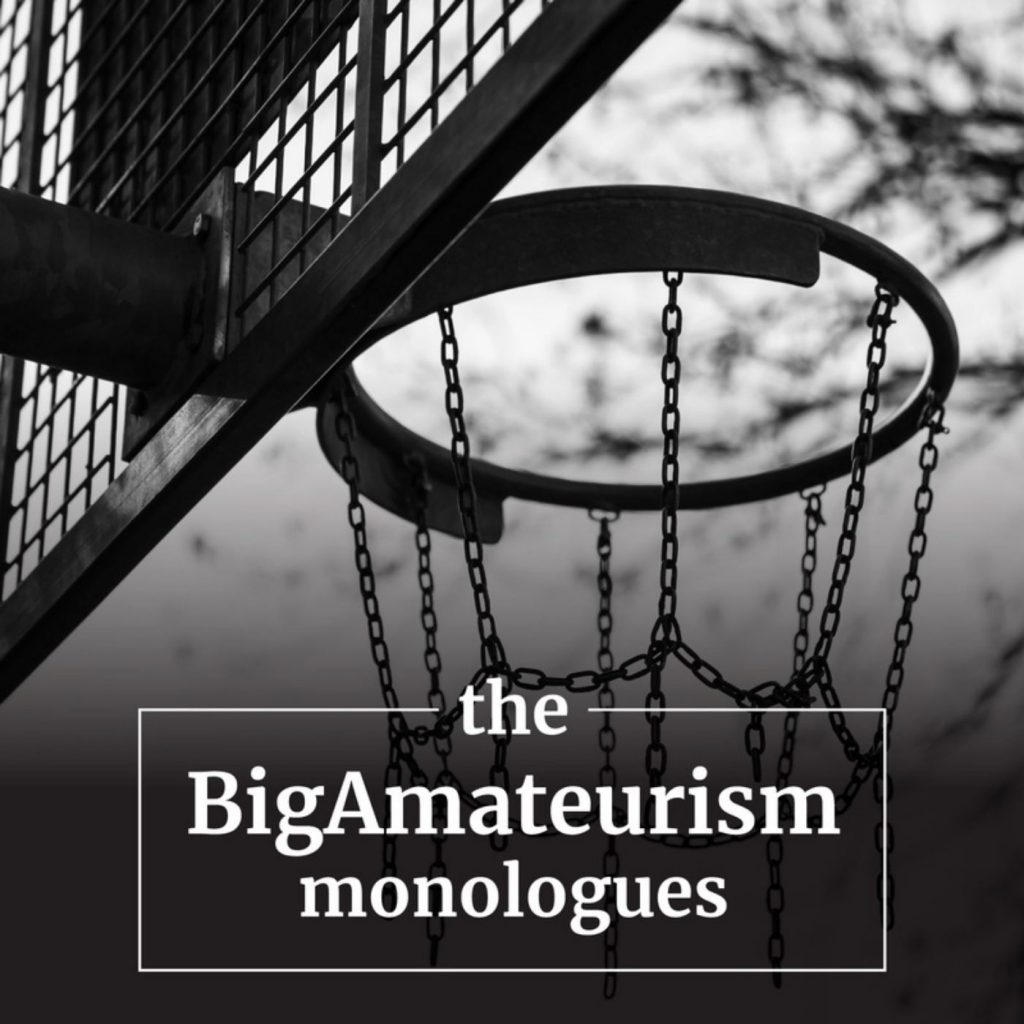Episodes
In this episode, we look at the opaque world of university president decision-making in the context of the Big Ten’s deliberations in August 2020 regarding fall football. As in nearly all aspects of BigAmateurism’s business operations, nothing is as it is portrayed to the public.
Show Notes
In August 2020, Big Ten conference presidents discussed moving their conversation on whether to move forward with fall football to the Big Ten conference portal—a private forum—where their communications would not be subject to public records laws. This suggestion originated with University of Wisconsin-Madison Chancellor Rebecca Blank. In response to public records requests from TheWashington Post, Big Ten universities claimed that communications regarding fall football were off-limits to the public. The Post ran an article on March 5th, 2021 detailing the discussions among certain Big Ten presidents to move the conversation to the Big Ten private portal. In response to the article, Blank issued an “apology” for the “appearance” of her suggestion. Freedom of information advocates described the apparent attempt to evade public records laws as “shocking”, “troubling” and “wrong on the law.” Blank’s role in the suggestion to move the fall football decision-making process to a private forum is particularly relevant. Blank has been integral to the NCAA/Power 5 campaign in federal courts and Congress to achieve the Iron Throne of college sports regulation. Blank is now a member of the NCAA’s most powerful governing board—the NCAA Board of Governors. She also testified in 2018 as an NCAA witness at the trial of the Alston antitrust suit and also testified as an NCAA witness at the September 15th, 2020 Senate hearings (Health, Education, Labor, and Pensions Committee) ostensibly on NIL “compensation.” The Post’s article raises important questions about transparency, the role of Power 5 presidents in the NCAA governance model, and the Power’s/NCAA’s claimed commitment to its basic principles of athlete well-being. The Big Ten fall football deliberations also illustrate the obvious, inherent conflicts of interest among university decision-makers, particularly those such as Blank who wear multiple hats (president, conference board of directors, NCAA governing board, and ostensibly “independent” advocate for NCAA/Power 5 amateurism-based compensation limits).
Resources for this Episode:
“Big Ten presidents kept return-to school, football communications out of public eye”, The Washington Post, March 5th, 2020
“Football Has Long Been the Third Rail for College Leaders. It’s Even More Perilous Now”, The Chronicle of Higher Education, March 9th, 2020
“UW-Madison Chancellor Rebecca Blank says pay-for-play in college sports ‘not our mission’”, Wisconsin State Journal, December 15th, 2018
Big Ten Council of Presidents and Chancellors, bigten.org
Big Ten Conference Inc. IRS Form 990 “Return of Organization Exempt From Income Tax”, 2017
Rebecca Blank Written Testimony Before the U.S. Senate Committee on Health, Education, Labor & Pensions, “Compensating College Athletes: Examining the Potential Impact on Athletes and Institutions” September 15th, 2020
U.S. Senate Committee on Health, Education, Labor, and Pensions Full Committee Hearing (video) “Compensating College Athletes: Examining the Potential Impact on Athletes and Institutions”, September 15th, 2020
This episode answers a question that has been the bane of college sports fans and stakeholders for years: what does the NCAA president actually do? The NCAA president is perhaps the least understood power player in the business of BigAmateurism. While NCAA President Mark Emmert does the Indianapolis sashay at the mention of the word accountability, the office he holds has extraordinary powers that have come to define central components of BigAmateurism’s business model in the 21st-century.
Show Notes
Buried in the basement of the 451-page NCAA Division I Manual are Executive Regulations (Article 31, “Executive Regulations”) that indeed make the NCAA President the “Omnipotent Czar” of college sports (quote from former NCAA President Myles Brand referenced in the intro clip to this episode). The NCAA President’s authorities as set forth in provisions 31.6 (“Rights to NCAA Properties and Marketing Restrictions”) and 31.8. (“Personnel”) place in the President’s hands powers that may determine the future of college sports; or, more accurately, in the hands of an army of lawyers, lobbyists, and public relations/marketing experts whom NCAA President Emmert has retained to lead the NCAA out of a crisis largely of its own making. These experts, not NCAA member institutions or governing boards, are the true decision-makers in perhaps the most consequential era in the history of college sports. In exercising these authorities, Emmert is not doing the will of people or serving the interests of athletes. Instead, he is engaged in a cynical, dishonest campaign to preserve the NCAA administrative state and its lavish accouterments. To save the bureaucracy and the status quo, Emmert must also appease the Power 5 football interests, CBS/Turner, and legions of downstream beneficiaries of March Madness money.
Resources for this Episode:
NCAA 2020-21 Division I Manual, Article 31 (“Executive Regulations”), secs. 31.6 (“Rights to Properties and Marketing Restrictions”) and 31.8 (“Personnel”)
In this episode, we look at the role of university presidents in BigAmateurism. Under the NCAA constitution (and in NCAA national office rhetoric), all roads—at the institutional, conference, and NCAA levels—lead to university presidents in the conduct and control of intercollegiate athletics. Where did this concept originate? And what assumptions underlie it? We answer these questions and more.
Show Notes
The entire model of college athletics is built on the foundation of presidential control. The NCAA constitution embeds the primacy of presidential leadership into its fundamental policy and purpose and requires presidential leadership of the NCAA’s two most important governing bodies: the NCAA Board of Governors and the Division I Board of Directors. The concept of presidential leadership and control of college athletics has its roots in early 20th-century reform initiatives, primarily the 1929 Carnegie Report. The Carnegie Report’s call for presidential control of college athletics arose from a values-based belief that commercialized, professionalized college sports (primarily football) were irreconcilably inconsistent with the intellectual and academic missions of American universities. This narrative was carried forward explicitly into the modern TV era of college sports in the Knight Commission’s 1991 report “Keeping Faith with the Student-Athlete” which advocated presidential leadership and control of college athletics at the university, conference, and NCAA levels. In the mid-1990s, the NCAA adopted the Knight Report model in a revamp of the NCAA governance structure which led to university presidents (heavily weighted towards big-time football interests) having ostensible control over NCAA governance. This emphasis on presidential control at the NCAA level coincided with the big-time football interests call for the elimination of one-school, one-vote voting. The presidential leadership/control model has done little to solve the issues identified by the Knight Commission and other external critics of commercialized, professionalized college sports yet there has been little NCAA introspection as to why that is the case. External commentators have offered several reasons for the failure of presidential leadership including that (1) it wasn’t pursued forcefully enough; (2) that, as a practical matter, presidents aren’t able to marshal cohesive support from institutional stakeholders to place meaningful limits on the perceived excesses of big-time college sports; and, (3) that university presidents—particularly at Power 5 schools—are hypocrites who have never been sincere in their efforts to reign in commercialized, professionalized college sports. Despite the failure of the presidential reform movement as a check on increasing commercialization and professionalization in college sports, powerful external decision-makers in the Perfect Storm—particularly Senators and federal judges—defer to the narratives promoted by university presidents.
Resources for this Episode:
NCAA Division I Manual, Const. Art. 1 (“Name, Purposes and Fundamental Policies”), sec. 1.2 (b) (“Purposes”); Const. Art. 2 (“Principles for Conduct of Intercollegiate Athletics”), sec. 2.1.1 (“The Principle of Institutional Control and Responsibility”); Const. Art. 6 (“Institutional Control”), sec. 6.1.1 (“President or Chancellor”)
Carnegie Report on American College Athletics (1929) (Carnegie Foundation or JSTOR subscription required to access)
Knight Commission on College Athletics 1991 Report “Keeping Faith with the Student-Athlete” (combined reports 1991, 1992, 1993)
College Athletes for Hire: The Evolution of the Amateur Myth, Allen A. Sack and Ellen Staurowsky (1998, Preager)
Pay for Play: A History of Big-Time College Athletic Reform, Ronald A. Smith (2011, UI Press)
Sports and Freedom: The Rise of Big-Time College Athletics, Ronald A. Smith (1988, Oxford Univ. Press)
Games Colleges Play: Scandal and Reform in Intercollegiate Athletics, John R. Thelin (1994, Johns Hopkins Univ. Press)
Unsportsmanlike Conduct: Exploiting College Athletes, Walter Byers (1995)
In this episode, we begin an exploration of the stakeholders in BigAmateurism. We’ll begin with primary in-system stakeholder-beneficiaries which include the NCAA, universities, university presidents/chancellors, university governing boards, faculty, students, and alumni. First up is the NCAA. What exactly is the NCAA?
Show Notes
Condoleezza Rice referred to the stake-holder groups in BigAmateurism as a “circular firing squad” – where the problems are always someone else’s fault. The NCAA is the blame-runner-in-chief. How the NCAA describes itself in its constitution, to the IRS, to Congress and in public relations campaigns has enormous market value and enhances its commercial brand. Indeed, the NCAA bases its assertions in antitrust lawsuits on that premise—the benevolent guardian of the amateur ideal, the “student-athlete” and the “collegiate model.” But behind that seductive façade, the NCAA bureaucracy focuses more on self-perpetuation than education and athlete well-being. To survive and advance, the NCAA must placate a Power 5 football behemoth over which the NCAA has no practical power or control due to the US Supreme Court’s 1984 decision in Board of Regents. In that antitrust case, the NCAA lost its football empire to what are now the Power 5 conferences. Even before Board of Regents, the big-time football interests flexed their muscle in the beginning wave of a hostile takeover of both the college football marketplace and NCAA governance. In 1973, 1978, 1996, and 2014, the big-time football interests demanded—under threat to leave the NCAA entirely—increasing control of the NCAA governance process and have now achieved a complete take-over of the entire Association. After Board of Regents, the NCAA’s consolation prize was the Division I men’s basketball tournament—March Madness—which funds the entire NCAA administrative state. The NCAA uses its nearly billion dollar a year revenue from that single tournament to fund hundreds of millions of dollars in lavish national office spending and handouts to stakeholder-beneficiaries association-wide, including block grants to Division II and Division III. The overwhelming majority of the elite men’s basketball players that provide the value in the March Madness product are African American. Division I men’s basketball has the highest concentration of African American athletes of any NCAA sport in any NCAA division. The overwhelming majority of the downstream beneficiaries are white. Power 5 football interests do not pay a dime for NCAA overhead—including hundreds of millions of dollars in legal fees and expenses incurred by the NCAA to defend to its amateurism-based compensation limits and millions more to pursue its quest for the Iron Throne of college sports regulation. Big-time football keeps for itself the revenue from the College Football Playoff and its major bowl tie-ins worth approximately 800 million dollars each year. Big-time football’s leverage over the NCAA rests in its threats to leave the Association unless the NCAA does football’s bidding. After football-driven conference realignment over the last thirty years and the creation of the Power 5, if the Power 5 left the NCAA, the March Madness tournament would have little commercial value. The NCAA’s tenuous détente with big-time football is premised on preserving the status quo—at any cost. The Perfect Storm has stressed and exposed this Faustian bargain.
Resources for this Episode:
“Independent Commission on College Basketball Presents Formal Recommendations Remarks (as Prepared) by Dr. Condoleezza Rice (April 25th, 2018)”
Testimony of NCAA President Myles Brand before the Senate Judiciary Committee on October 29th, 2003 “Competition in College Bowl Games” (39:20 – 40:30)
NCAA Division I Manual 2010-2021, Constitution, Article 4 (Organization)
“NCAA Governance – The Football Power Play” (cagerredux blog, March 25th, 2019)
“The Ghosts of the College Football Association” (cagerredux blog, August 12th, 2020)
McCants v Nat’l Collegiate Athletic Ass’n, 251 F. Supp. 3d 952 (M.D.N.C. 2017)




